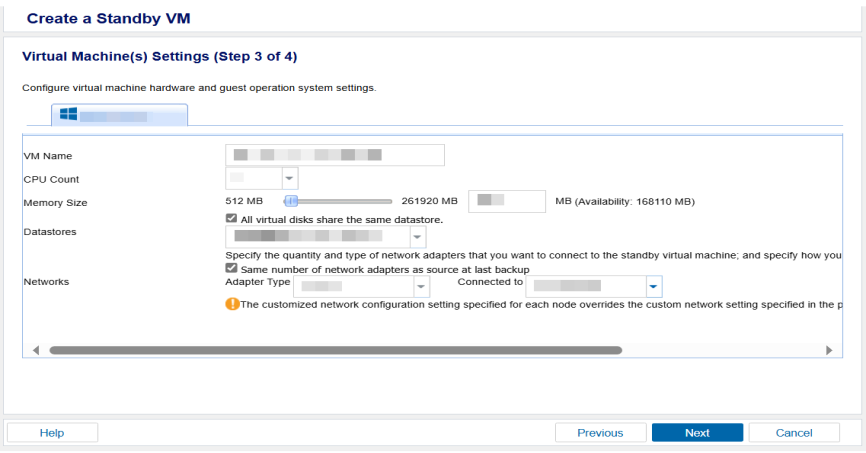Ad-hoc Virtual Standby to VMware vSphere
This section provides information about how to configure virtual machine settings for creating an Ad-hoc Standby VM to VMware vSphere.
Follow these steps:
- On the Virtual Machine(s) Settings (Step 3 of 4) screen, specify the configuration details for the ad-hoc standby VM hardware.
- The VMware SR-IOV passthrough and Flexible network adapter is not supported.
- The IP address of the source machine cannot be inherited automatically into the Ad-hoc Standby VM.
-

- Click Next.
VM Name
Specifies the prefix you want to add to the display name for the virtual machine on the ESX Server system.
Default value: UDPVM_
CPU Count
Specifies the minimum and maximum CPU count the standby virtual machine supports.
Memory
Specifies the total amount of RAM in MB to be allocated for the standby virtual machine.
Note: The amount of RAM specified must be a multiple of two.
All virtual disks share the same datastore
Select this option to copy all of the disks related to the virtual machine to one data store.
Clear the check box to copy the disk-related information for the virtual machine to the corresponding data store. Specify the location where you want to store the conversion data.
Network
Specifies the adapter type and the network connection.
Lets you define the NICs, virtual networks, and paths that the ESX Server system uses to communicate with the virtual machines.
Notes:
Same number of network adapters as source at last backup
Select this option to define how to map the virtual NIC to the virtual network. Specify this option when the virtual machine contains virtual NICs and a virtual network.
Clear the check box to define the name of the virtual network that you want the NIC to use to communicate.
The Summary screen appears.